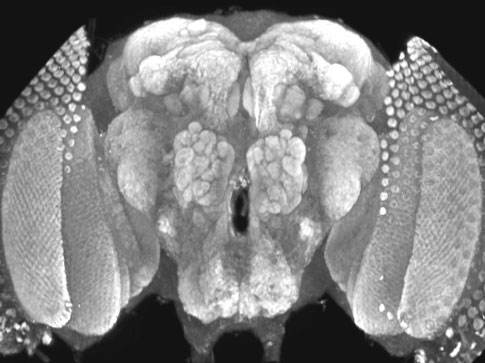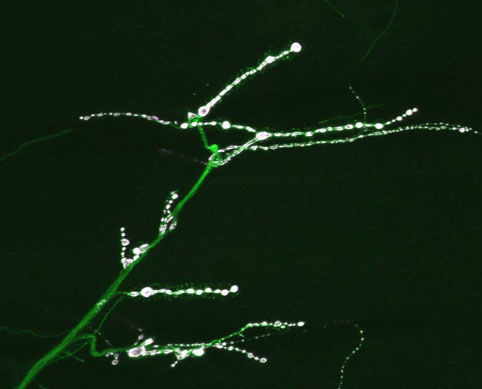|

| |
 Robin
Stevens, 2006- Robin
Stevens, 2006-
B.S., 2005, Stanford University
Neurons communicate via calcium-dependent
exocytosis of synaptic vesicles containing neurotransmitters. This process is
highly regulated and depends on the coordination of a wide array of proteins
that execute the steps of targeting, docking, fusion and endocytotic recycling
of synaptic vesicles. The synaptic vesicle cycle has been studied extensively,
and the function of many proteins associated with these vesicles has been
established. However, the functions of synaptophysin and synaptogyrin, two
distantly related and abundant tetraspanning synaptic vesicle membrane proteins,
are still relatively unknown. These proteins have been implicated in several
steps of the synaptic vesicle cycle including the formation of a fusion pore or
ion channel, vesicle biogenesis through cholesterol interactions, and the
regulation of endocytosis via interactions with dynamin. We hope to further
elucidate the role of these proteins by studying a synaptogyrin null
mutant in Drosophila melanogaster. The Drosophila genome
encodes a single synaptogyrin homologue and lacks a synaptophysin homologue,
simplifying genetic analysis. Generation of transgenic animals with a
synaptogyrin tagged with GFP demonstrate the protein is enriched on synaptic
vesicles. Animals lacking synaptogyrin are viable and fertile with no overt
motor defects. However, further analysis may reveal more subtle defects in
synaptic morphology and neurotransmission.
|




